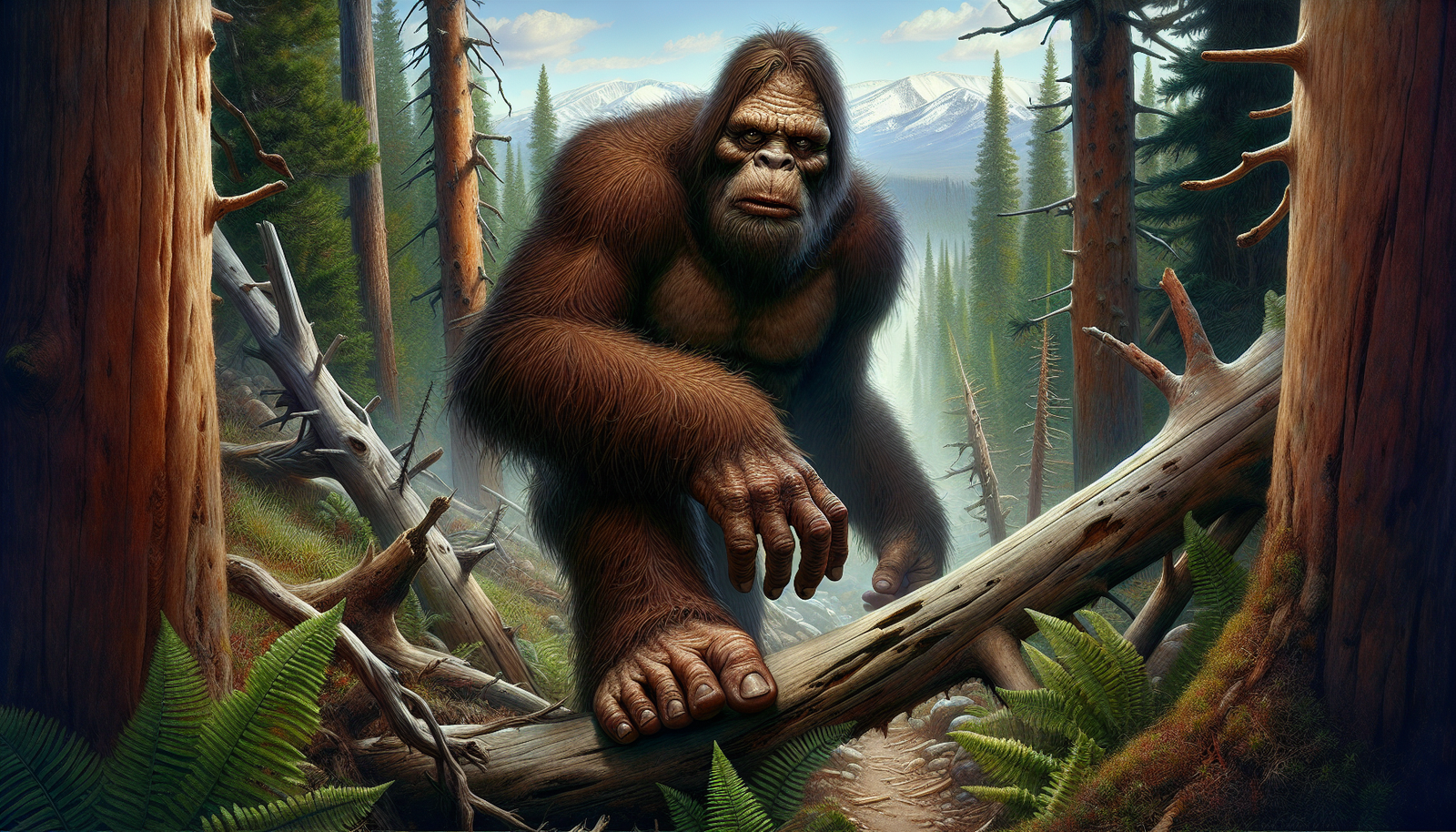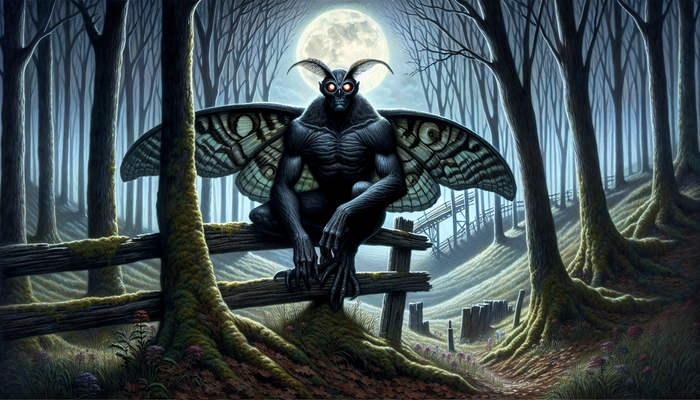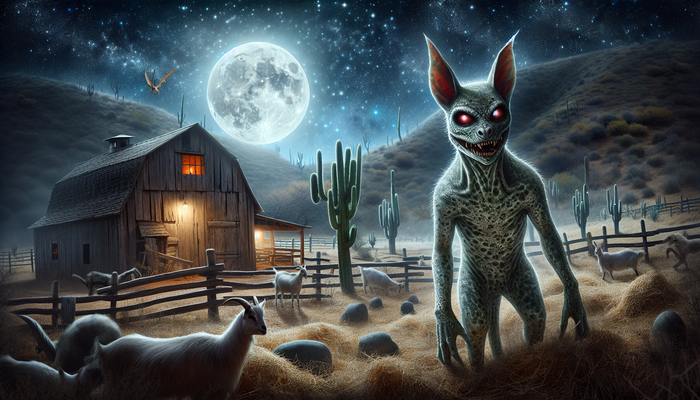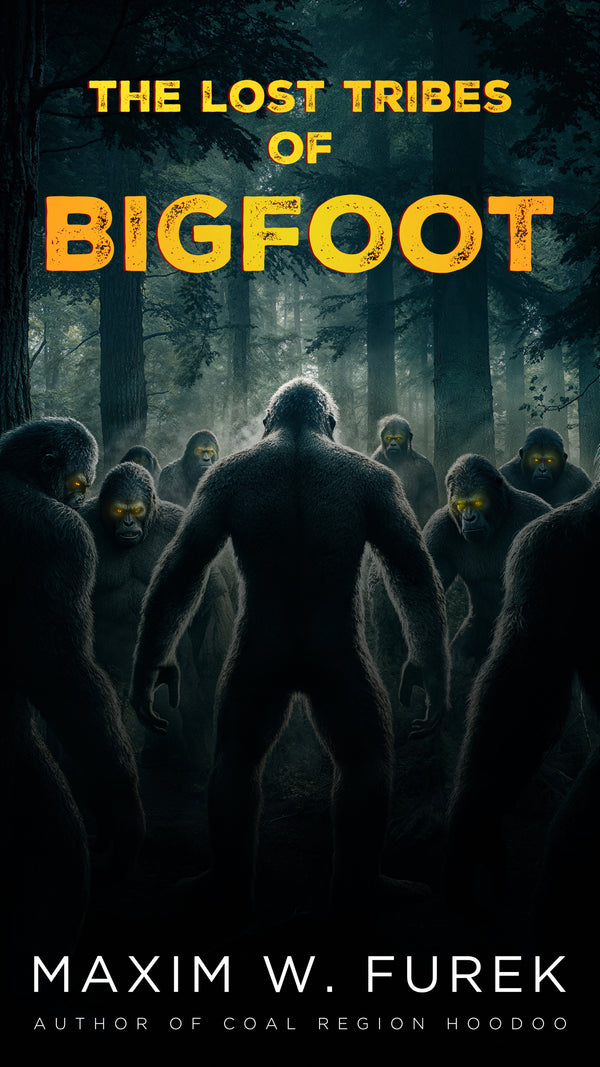New Mexico's Hotbed of Sasquatch Encounters

By Oliver Bennett, Cryptozoologist
In the realm of cryptozoology, few creatures have captured the imagination and sparked debate quite like Bigfoot. This elusive, hairy hominid has been the subject of countless stories, sightings, and investigations, with believers and skeptics alike passionately arguing their case. While the Pacific Northwest may be the most well-known region associated with Sasquatch, a surprising contender has emerged as a hotspot for Bigfoot activity: the Land of Enchantment, New Mexico.
As a researcher and scholar of the unexplained, I have long been fascinated by the rich history and cultural significance of Bigfoot legends in New Mexico. From the ancient stories of the Navajo people to the modern-day investigations of dedicated researchers, this state has a wealth of compelling cases and evidence that demand closer examination.
In this article, we will embark on a journey through the rugged landscapes and hidden corners of New Mexico, exploring the most intriguing Bigfoot encounters and the ongoing quest to unravel the mystery of this enigmatic creature. Join me as we delve into the heart of Sasquatch country and uncover the secrets that lie within.
New Mexico: A Bigfoot Hotbed
When one thinks of Bigfoot sightings, states like Washington, California, and Oregon often come to mind. However, New Mexico has quietly emerged as a major player in the world of Sasquatch research. According to the Bigfoot Field Researchers Organization (BFRO), New Mexico ranks 11th nationally in terms of total Bigfoot sightings, with over 130 reported incidents. This places the state firmly among the top contenders for Bigfoot activity, a remarkable feat considering its relatively low profile in the cryptozoological community.
So, what is it about New Mexico that makes it such an appealing habitat for Bigfoot? The answer lies in the state's diverse and rugged terrain. From the dense forests of the Sangre de Cristo Mountains to the remote canyons of the Gila Wilderness, New Mexico boasts vast swathes of untamed wilderness that could easily conceal a large, elusive primate. The state's low human population density in many regions also means fewer disturbances and more opportunities for Bigfoot to roam undetected.
But there's more to New Mexico's Bigfoot phenomenon than just its geography. The state's rich cultural history and folklore have played a significant role in shaping the public's awareness and openness to the idea of Sasquatch. For centuries, Native American tribes like the Navajo and Pueblo peoples have told stories of large, hairy, humanlike creatures roaming the land. These legends, with names like "Ye'iitsoh" and "Mogollon Monster," have become an integral part of New Mexico's mythological landscape, laying the groundwork for modern-day Bigfoot sightings and investigations.
As we explore the various hotspots and cases throughout New Mexico, it's important to keep in mind the deep-rooted cultural significance of Bigfoot in this region. The stories and beliefs surrounding Sasquatch are not merely the product of overactive imaginations or hoaxes; they are a reflection of the complex relationship between humans, nature, and the unknown that has shaped the Land of Enchantment for generations.
The Navajo Nation: Epicenter of Bigfoot Activity
One of the most fascinating aspects of New Mexico's Bigfoot phenomenon is the high concentration of sightings and encounters reported within the Navajo Nation. This vast expanse of rugged, mountainous terrain, spanning over 27,000 square miles across New Mexico, Arizona, and Utah, has long been a hotbed of Sasquatch activity.
At the heart of the Navajo Nation's Bigfoot lore are the legends of the Ye'iitsoh and the Skinwalker. The Ye'iitsoh, which translates to "big god" in the Navajo language, is described as a giant, hairy, humanlike creature that roams the wilderness. The Skinwalker, on the other hand, is a more sinister figure—a shapeshifting witch or sorcerer who can take on the form of various animals, including a large, hairy humanoid.
These ancient stories have taken on new life in recent years, as countless Navajo residents have come forward with their own Bigfoot sightings and encounters. From the remote canyons of the Chuska Mountains to the dense forests of the Defiance Plateau, reports of large, bipedal creatures leaving massive footprints and emitting chilling vocalizations have become increasingly common.
In response to the growing number of Bigfoot-related incidents, the Navajo Nation took an unprecedented step in 2000: they created a specialized unit within the Navajo Rangers, known as the Paranormal Task Force, to investigate these strange occurrences. Led by the intrepid duo of Stanley Milford Jr. and Jonathan Redbird Dover, the task force set out to collect evidence, interview witnesses, and shed light on the Sasquatch mystery.
Over the years, Milford and Dover have investigated numerous cases that defy conventional explanation. In one particularly chilling incident, a Navajo woman reported a large, dark, hairy creature attempting to enter her mobile home in the dead of night. The next morning, she discovered an enormous 18-inch-long, 4-inch-wide footprint outside her residence—a tantalizing piece of evidence that suggests something more than a mere legend lurking in the shadows.
The Navajo Rangers' investigations have also uncovered other signs of Bigfoot activity, such as trees with their bark stripped off, twisted branches, and strange stick structures that some researchers believe may be a form of communication or territorial marking. While skeptics may dismiss these findings as the work of bears or other known animals, the sheer volume and consistency of the evidence collected by Milford and Dover cannot be easily ignored.
As we delve deeper into the Navajo Nation's Bigfoot phenomenon, it becomes clear that there is a complex interplay between the physical evidence, the cultural beliefs, and the personal experiences of those who have encountered the creature. For the Navajo people, Bigfoot is not just a curiosity or a myth; it is a powerful, sometimes frightening presence that has shaped their understanding of the natural world for generations.
By taking these stories and investigations seriously, we can begin to unravel the mystery of Bigfoot in the Navajo Nation and gain a deeper appreciation for the rich cultural tapestry that has given rise to one of the most compelling cryptozoological puzzles of our time.
Bigfoot Hotspots: New Mexico's Most Active Regions
While the Navajo Nation may be the epicenter of Bigfoot activity in New Mexico, the state's other regions have also been the site of numerous sightings and encounters. From the rugged peaks of the Jemez Mountains to the remote canyons of the Gila Wilderness, New Mexico's diverse landscapes have proven to be a veritable playground for Sasquatch enthusiasts and researchers alike.
The Jemez Mountains
One of the most notable hotspots for Bigfoot activity in New Mexico is the Jemez Mountains, a rugged, volcanic range located in the north-central part of the state. This vast wilderness area, which includes the stunning Valles Caldera National Preserve, has been the site of countless Bigfoot sightings and encounters over the years.
Perhaps the most famous Jemez Mountains incident occurred in 2012, when a local resident named Arturo "Homie" Martínez had a hair-raising encounter with a large, hairy creature while scouting for elk with a friend. As they drove along a remote forest road, Martínez spotted a massive, bipedal figure running down a hillside and crossing the road in front of their vehicle. He described the creature as being at least 7 to 8 feet tall, with dark fur covering its body and a hunched, yet powerful, gait.
The encounter left Martínez and his friend shaken, and they quickly fled the area, only to return later to find numerous trees broken and strewn across the road—a chilling sign of the creature's immense strength and potential aggression.
The Sandia and Ortiz Mountains
But the Jemez Mountains are just one piece of the Bigfoot puzzle in New Mexico. The Sandia and Ortiz Mountains, located in the central part of the state, have also been the focus of intense research and investigation.
In the Sandias, researcher Rob Kryder has been collecting evidence of Bigfoot activity for years, including a remarkable thermal video captured in 1995 that appears to show a large, bipedal creature standing on a ridge. Kryder has also found numerous instances of twisted trees, stripped bark, and strange stick structures that he believes may be linked to Sasquatch communication or territorial marking.
Meanwhile, in the nearby Ortiz Mountains, Kryder and his team have been tracking a family of three Bigfoot creatures for over a year, documenting their movements and behaviors through a combination of footprint casts, hair samples, and audio recordings of chilling vocalizations that seem to defy explanation.
The Taos and Sacramento Mountains
But New Mexico's Bigfoot hotspots don't end there. The Taos and Sacramento Mountains, located in the northern and southern parts of the state, respectively, have also been the site of numerous sightings and encounters over the years.
In the Taos Mountains, a local resident named Juan reported a terrifying encounter in 2012 with a massive, hairy creature that ran across the road in front of his vehicle, leaving him and his family shaken and questioning the very nature of reality. Similarly, in the Sacramento Mountains, a man named Emerson Jim had a chilling encounter with a large, aggressive creature that emitted a deafening roar and left a trail of broken trees in its wake.
As we explore these various hotspots and cases, a pattern begins to emerge: New Mexico's Bigfoot sightings are not isolated incidents, but rather part of a larger, more complex phenomenon that spans the state's diverse landscapes and ecosystems. From the high desert to the alpine forests, Sasquatch seems to have found a home in the Land of Enchantment, leaving behind tantalizing clues and unanswered questions that continue to fuel the imaginations of researchers and enthusiasts alike.
Beyond the Mountains: Bigfoot in New Mexico's Deserts and Forests
While New Mexico's mountain ranges may be the most well-known Bigfoot hotspots in the state, the creature's presence has also been reported in the state's vast deserts and dense forests. These sightings and encounters serve as a testament to the adaptability and elusiveness of Sasquatch, as well as the dedication of the researchers and eyewitnesses who continue to pursue the truth behind the legend.
The Tularosa Basin
One of the most intriguing desert-based Bigfoot cases in New Mexico comes from the Tularosa Basin, a vast, arid region in the southern part of the state known for its striking white sands and rich history of paranormal activity. In 2000, a local resident named Jesus Payan Jr. had a chilling encounter with what he believes was a Bigfoot creature while stargazing with friends near his home.
As Payan and his companions sat in the darkness, they suddenly heard the sound of heavy footsteps crunching on the gravel nearby. Payan's skin prickled with fear as he and his friends began throwing rocks towards the source of the noise, hoping to scare off whatever was lurking in the shadows. To their horror, their first volley missed, but Payan's second throw seemed to make contact, eliciting a terrifying, guttural roar from the creature.
Payan and his friends fled in terror, racing back to the safety of his house with the creature seemingly in pursuit. The encounter left an indelible mark on Payan, who has since dedicated countless hours to researching and investigating Bigfoot activity in the Tularosa Basin and beyond.
Payan's experience, while frightening, is not unique. Other residents of the Tularosa Basin have reported similar encounters over the years, suggesting that Bigfoot may have adapted to the harsh, arid environment of the desert, perhaps taking advantage of the region's abundant wildlife and scarce human population to maintain its elusive existence.
The Bootheel and Lincoln National Forest
But New Mexico's Bigfoot sightings are not limited to the desert. The state's dense forests, particularly in the Bootheel region of the southwest and the Lincoln National Forest in the southeast, have also been the site of numerous encounters and investigations.
In the Bootheel, a remote, sparsely populated area bordering Arizona and Mexico, locals have reported sightings of large, hairy creatures roaming the rugged terrain for decades. Some have even claimed to have found massive footprints and other physical evidence of Bigfoot's presence, though conclusive proof has remained elusive.
Similarly, the Lincoln National Forest, with its vast expanses of ponderosa pine and mixed conifer forests, has been a hotbed of Bigfoot activity over the years. In 2008, a team of researchers led by the infamous Bigfoot hunter Tom Biscardi visited the area to investigate a series of recent sightings and collect evidence of the creature's presence.
While Biscardi's methods and claims have been met with skepticism by many in the Bigfoot research community, his expedition to the Lincoln National Forest highlights the enduring fascination and mystery surrounding Sasquatch in New Mexico's wild places.
As we consider these desert and forest-based Bigfoot encounters, it becomes clear that the creature's range and adaptability may be far greater than previously thought. From the scorching sands of the Tularosa Basin to the dense, shadowy forests of the Bootheel and Lincoln National Forest, Bigfoot seems to have found a way to thrive in even the most challenging environments.
This realization raises intriguing questions about the nature of Bigfoot and its place in the natural world. Is it a relic species, a survivor from a bygone era that has managed to evade detection and capture for centuries? Or is it something altogether different, a creature that defies our understanding of biology and evolution, a living embodiment of the mysteries that still lurk in the wild places of the world?
As researchers and enthusiasts continue to pursue these questions, one thing remains clear: New Mexico's deserts and forests hold secrets that may yet shed light on the enduring enigma of Bigfoot, and the search for answers will continue to captivate the imaginations of those who dare to venture into the unknown.
The Navajo Rangers and the Scientific Investigation of Bigfoot
One of the most remarkable aspects of New Mexico's Bigfoot phenomenon is the involvement of the Navajo Rangers and their Paranormal Task Force in the scientific investigation of the creature. Led by the intrepid duo of Stanley Milford Jr. and Jonathan Redbird Dover, this specialized unit has taken a methodical, evidence-based approach to the study of Sasquatch, setting a new standard for cryptozoological research in the process.
At the heart of the Navajo Rangers' investigation is a commitment to collecting and documenting physical evidence of Bigfoot's presence. From footprint casts and hair samples to audio recordings and video footage, Milford and Dover have amassed an impressive array of data that suggests the creature is more than just a figment of the imagination.
One of the key strengths of the Navajo Rangers' approach is their emphasis on maintaining objectivity and avoiding assumptions, even in the face of compelling eyewitness accounts. They understand that the search for Bigfoot is not about proving the creature's existence, but rather about following the evidence wherever it may lead, no matter how strange or unexpected the conclusions may be.
From Bigfoot to UFOs: Hangar 1 Publishing Has You Covered!
Explore Untold Stories: Venture into the world of UFOs, cryptids, Bigfoot, and beyond. Every story is a journey into the extraordinary.
Immersive Book Technology: Experience real videos, sights, and sounds within our books. Its not just reading; its an adventure.



























